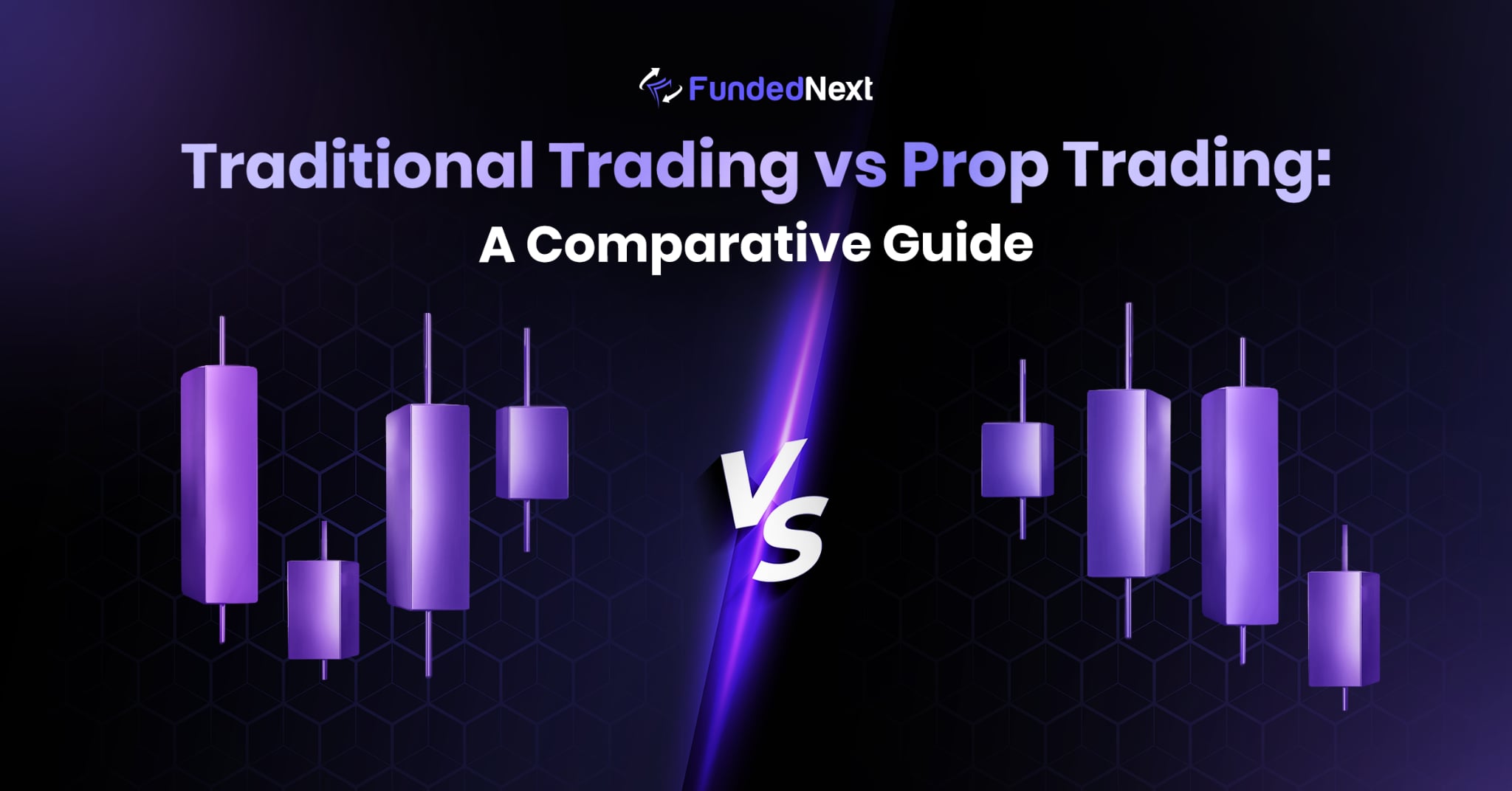
Table of Contents
The trading landscape offers a diverse range of methods and strategies, each designed to suit different goals and risk appetites of investors. Two prominent forms of trading that investors often encounter are traditional trading and proprietary (prop) trading. Although they share similarities in execution, these two methods differ significantly in terms of structure, risk management, and potential for profit. Let’s explore the distinctions between traditional trading and prop trading, helping you understand which one might be a better fit for your trading goals.
What is Traditional Trading?
Traditional trading typically involves an individual trader, trading with their own capital through a brokerage account. The trader uses personal funds to buy and sell securities, such as stocks, forex, commodities, or cryptocurrencies, and aims to profit from market fluctuations. In traditional trading, the trader is solely responsible for their capital, decision-making, and risk management. Which means if they gain total profit will be theirs. And if they lose, they will lose their own money.
Key Characteristics of Traditional Trading:
- Own Capital: Traders use their personal funds, which limits risk but also caps the potential for larger profits.
- Full Control: The trader has complete autonomy over trading decisions, strategies, and risk management.
- Individual Profit/Loss: Gains or losses directly impact the trader’s personal wealth.
- Leverage Options: Traditional traders may have access to leverage through their brokerage, They can choose leverage based on their preference. It can be lower or higher than prop trading.
What is Prop Trading?
Proprietary trading, commonly referred to as prop trading, is when a trader operates using the capital provided by a firm instead of personal funds. Prop trading firms allow skilled traders or provide trading opportunities in a simulated trading environment for individuals with potential, offering them access to significant capital and advanced trading tools. In return, traders often share a small percentage of their profits with the firm. Prop trading allows individuals to engage in high-volume trading strategies that would typically be difficult to execute with personal funds alone.
Key Characteristics of Prop Trading:
- Firm’s Capital: Traders use the firm’s simulated funded accounts, enabling access to larger positions and more leverage.
- Profit Sharing: Profits are usually split between the trader and the prop firm, incentivizing both parties. However, the percentage of profit that the firm retains is very minimal.
- Risk Management by the Firm: The firm sets risk limits to protect its capital, and traders must adhere to strict rules.
- Advanced Tools: Prop firms provide popular trading platforms, simulated market data, and analysis tools, allowing traders to make informed decisions.
- Training and Mentorship: Many prop firms host trading psychology sessions led by industry experts to help traders refine their strategies.
- Leverage Options: Prop traders have access to leverage, which is usually much higher than the leverage offered in any broker house.
Pros and Cons of Traditional Trading
Pros:
- Complete control over trading decisions and strategies and no limitation in drawdown.
- No profit-sharing; all earnings belong to the trader.
- Sometimes traders face issues while withdrawing the profit amount.
- Not every broker has reliability with a good trading environment. So, getting a reliable broker house is difficult.
Cons:
- Limited capital and leverage, which may restrict profit potential.
- Personal losses directly impact the trader’s own financial position.
- Access to advanced tools may require additional investment.
Pros and Cons of Prop Trading
Pros:
- Access to large simulated funded accounts and leverage provided by the firm.
- Advanced popular trading platforms and strict risk management rules ensured by the firm.
- Little to no entry barrier to start trading with Prop Forms.
- Offers several CFD instruments to trade with.
Cons:
- Profit-sharing structure; traders have to share a small amount (5-20%) of their profit with the firm, based on the firm’s policy.
- Strict risk controls set by the firm, limiting decision-making autonomy.
- New firms take a considerable amount of time to process the Payout.
- Not every firm has reliability with a good trading environment. So, choosing a reliable firm is mandatory.
Conclusion
Both traditional trading and prop trading offer unique advantages and cater to different types of traders. Traditional trading provides full autonomy and personal gains but is limited by personal capital and resources. Prop trading, on the other hand, opens doors to larger market opportunities with access to significant capital and tools but requires adherence to firm rules and profit-sharing.
We, FundedNext, provide a good trading condition, offer traders up to 95% profit share, provide payout in 24 hours, and a supportive environment designed to help traders grow their skills while trading with substantial capital.
By understanding the strengths and limitations of each approach, you can choose the path that aligns best with your trading style, financial goals, and risk tolerance. Whether you decide to go solo with traditional trading or leverage the support of a prop firm like FundedNext, success ultimately comes down to discipline, strategy, and continuous learning.


